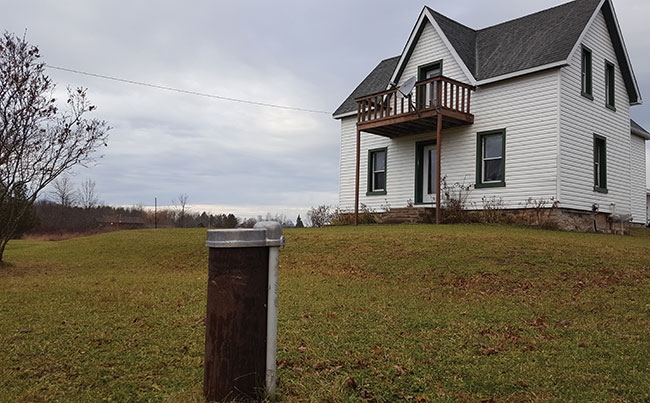
Features
Education
Research
Water Education: The changing well
June 25, 2018 By Jeff Wahl
 Once the well tag is installed, records are given and water is flowing, the owner is left to their own responsibility for the well water quality. Photo courtesy of Wahl Water
Once the well tag is installed, records are given and water is flowing, the owner is left to their own responsibility for the well water quality. Photo courtesy of Wahl WaterThe drilling of a well is a welcomed act for many people as it provides the necessity of water for their home or cottage. In Canada we are fortunate to have an abundance of ground water that can provide a reliable, year-round source of water for many municipalities and rural owners.
Provincial well regulations indicate what is required including the depth, well casing and well yield, recommendations for the pumping rate and pump size. Wellhead protection is completed to ensure that surface contaminants do not enter, and proper disinfection procedures are performed. There is no debate over this process and regulations clearly spell it out. Once the well tag is installed, records are given and water is flowing, the owner is left to their own responsibility for the well water quality.
How can an owner be sure that the water in their well is safe? The options include routine bacterial testing at the local public health unit for bacteria, water sampling with an accredited laboratory or sampling by a qualified water treatment professional. More recently there has been the advancement of do-it-yourself test kits available for purchase. All these options provide a snapshot of a specific time and are not indicative of ongoing water quality.
Experience has shown that the costs for laboratory testing and the inconvenience of collecting and delivering a water sample to the health unit or water treatment company often deter many people from doing it at all. This is amplified in rural areas where access is limited, and time constraints and distances are increased to submit a sample. Often sampling is conducted only when there is a noticeable change in water quality or when a real estate transaction occurs.
THREE SCENARIOS
Consider the following analogy: Five drops of arsenic are deliberately placed in a water sample bottle prior to submission. (This would be intentional and for the purpose of illustration only.)
- The sample is taken to a health unit for bacterial testing. It passes, as no arsenic test was conducted.
- The sample is taken to an accredited laboratory. Arsenic is detected, as it was tested for.
- The sample is taken to a water treatment company. Tests for hardness, iron, sulphur, total dissolved solids, pH and manganese do not detect arsenic, as no arsenic test was conducted.
It is easy to substitute arsenic with any contaminant that may enter a ground water source and ultimately flow from a consumer’s tap. Even with “common testing” the contaminant may never be identified, as it was never tested for. No water source remains in a constant state of quality without fluctuations due to seasonal changes, changes in the surrounding environment, human influences and changes in ground water flow patterns.
Given the vast uncertainty of any ground water source over a calendar year, it is critical that a homeowner be given the information necessary to make an educated choice by a qualified source. The idea of “one test a year and my water is safe” is an antiquated one that does provide a snapshot of water quality but not of ongoing changes. The need for properly installed water treatment devices is no longer one of perceived need but one of necessity to ensure the safety of water for the consumer.
This article originally appeared as Volume 2, Issue 3, of Wahl H2O – Educating Through Awareness
Jeff Wahl has 20 years of experience in the water treatment industry. He is the chief executive officer of Wahl Water and a water educator. For more information, contact Jeff at jeff@wahlwater.com.
Print this page